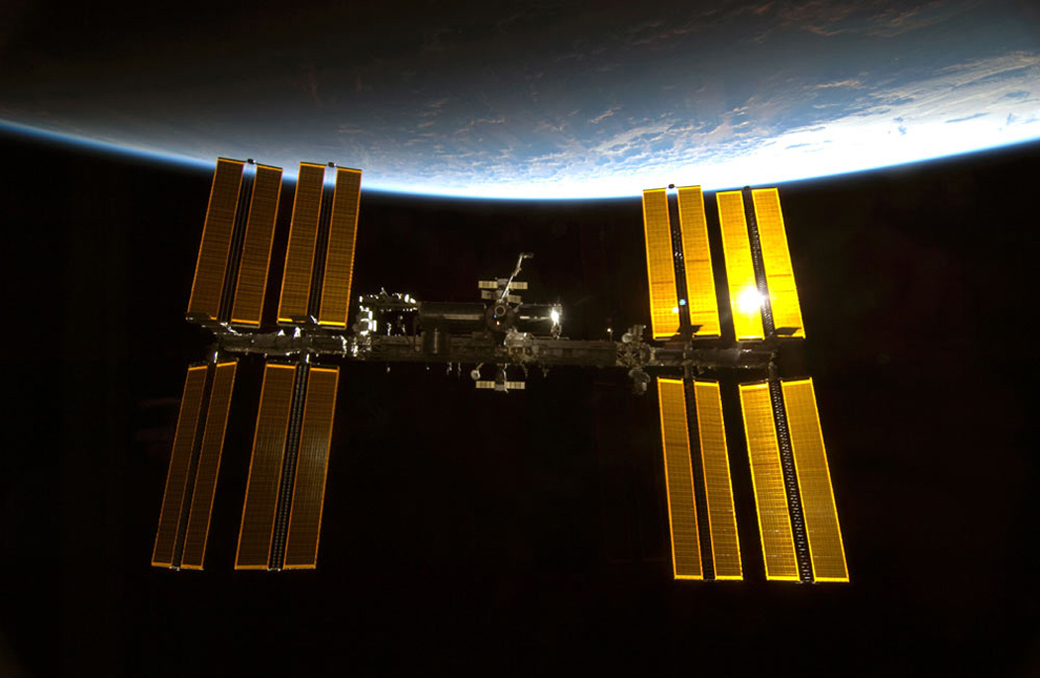Space Junk Forces Station Astronauts to Take Shelter in Lifeboats

This story was updated at 8 a.m. ET.
A leftover piece of an old Russian satellite forced six astronauts on the International Space Station to take shelter in a pair of lifeboat-like space capsules today (March 24), but zipped harmlessly by the outpost to the crew's relief.
The piece of space junk was spotted too late to move the orbiting laboratory out of the way and flew as close as 6.8 miles (11 kilometers) when it zoomed by at about 2:38 a.m. EDT (0638 GMT), NASA officials said.
While the chances of collision were remote, the potential danger of a hit was enough for Mission Control to order the station crew — which includes three Russians, two Americans and a Dutch astronaut —to seek shelter in two docked Soyuz space capsules just in case a quick escape to Earth is required.
"I don't see anything, which is good news," one of the station astronauts said in Russian, which was translated in a NASA broadcast.
It was the third time in 12 years that station astronauts took shelter from a close space debris pass. [Space Junk Photos & Cleanup Concepts]
NASA and its partners typically order an avoidance maneuver when a piece of space junk is expected to pass close by the space station and there are several days of advance notice. But this latest space debris threat was initially spotted on Friday morning, too late to plan a major maneuver, NASA officials said.
Get the Space.com Newsletter
Breaking space news, the latest updates on rocket launches, skywatching events and more!
"We're not too concerned about it, but it's too late to do a [debris avoidance maneuver]," station flight director Jerry Jason radioed station commander Daniel Burbank, of NASA, and his crew late Friday.
According to NASA updates, the space debris is a remnant of the Russian Cosmos 2251 communications satellite. In 2009, the defunct spacecraft crashed into the U.S. satellite Iridium 33 in a massive space collision that created a huge cloud of more debris. The crash created 2,000 pieces of orbital debris.
While the size of the space debris was difficult to pin down, it was "relatively small," NASA spokesman Rob Navias said during NASA TV commentary of the space trash flyby.
NASA astronaut Don Pettit, who is the other American aboard the space station, radioed Mission Control Friday to say he hoped to try and snap a photo of the space debris if it was possible. But the space debris whizzed by the space station unseen.
Space junk is a growing threat for astronauts on the space station, as well as other satellites orbiting Earth. According to recent estimates, there is about 6,000 tons of space debris in orbit today. NASA and the U.S. military's Space Surveillance Network regularly track about 20,000 pieces of the debris in order to help other active satellites avoid collisions with the orbital trash.
You can follow SPACE.com Managing Editor Tariq Malik on Twitter @tariqjmalik. Follow SPACE.com for the latest in space science and exploration news on Twitter @Spacedotcom and on Facebook.
Join our Space Forums to keep talking space on the latest missions, night sky and more! And if you have a news tip, correction or comment, let us know at: community@space.com.

Tariq is the Editor-in-Chief of Space.com and joined the team in 2001, first as an intern and staff writer, and later as an editor. He covers human spaceflight, exploration and space science, as well as skywatching and entertainment. He became Space.com's Managing Editor in 2009 and Editor-in-Chief in 2019. Before joining Space.com, Tariq was a staff reporter for The Los Angeles Times covering education and city beats in La Habra, Fullerton and Huntington Beach. In October 2022, Tariq received the Harry Kolcum Award for excellence in space reporting from the National Space Club Florida Committee. He is also an Eagle Scout (yes, he has the Space Exploration merit badge) and went to Space Camp four times as a kid and a fifth time as an adult. He has journalism degrees from the University of Southern California and New York University. You can find Tariq at Space.com and as the co-host to the This Week In Space podcast with space historian Rod Pyle on the TWiT network. To see his latest project, you can follow Tariq on Twitter @tariqjmalik.









